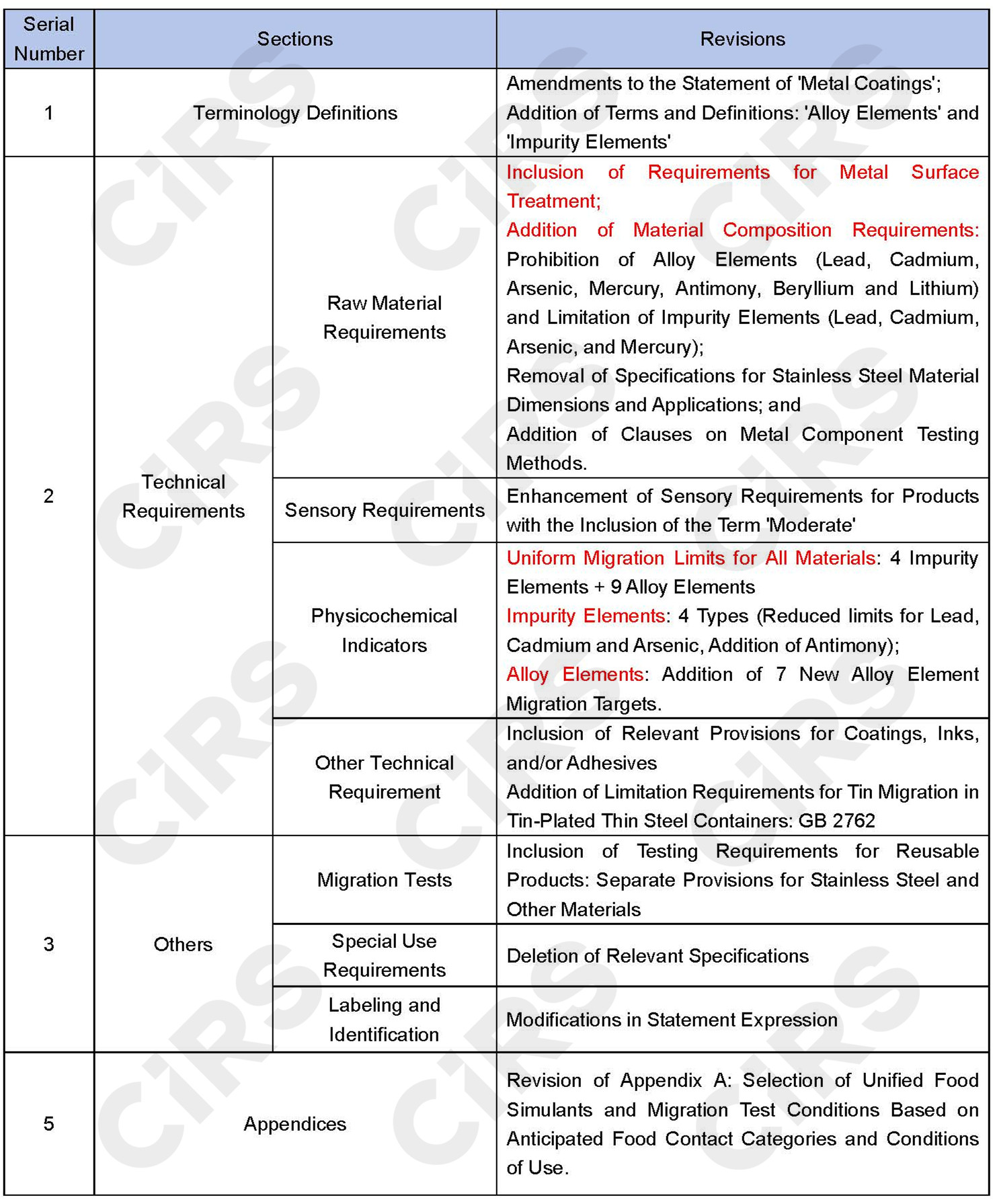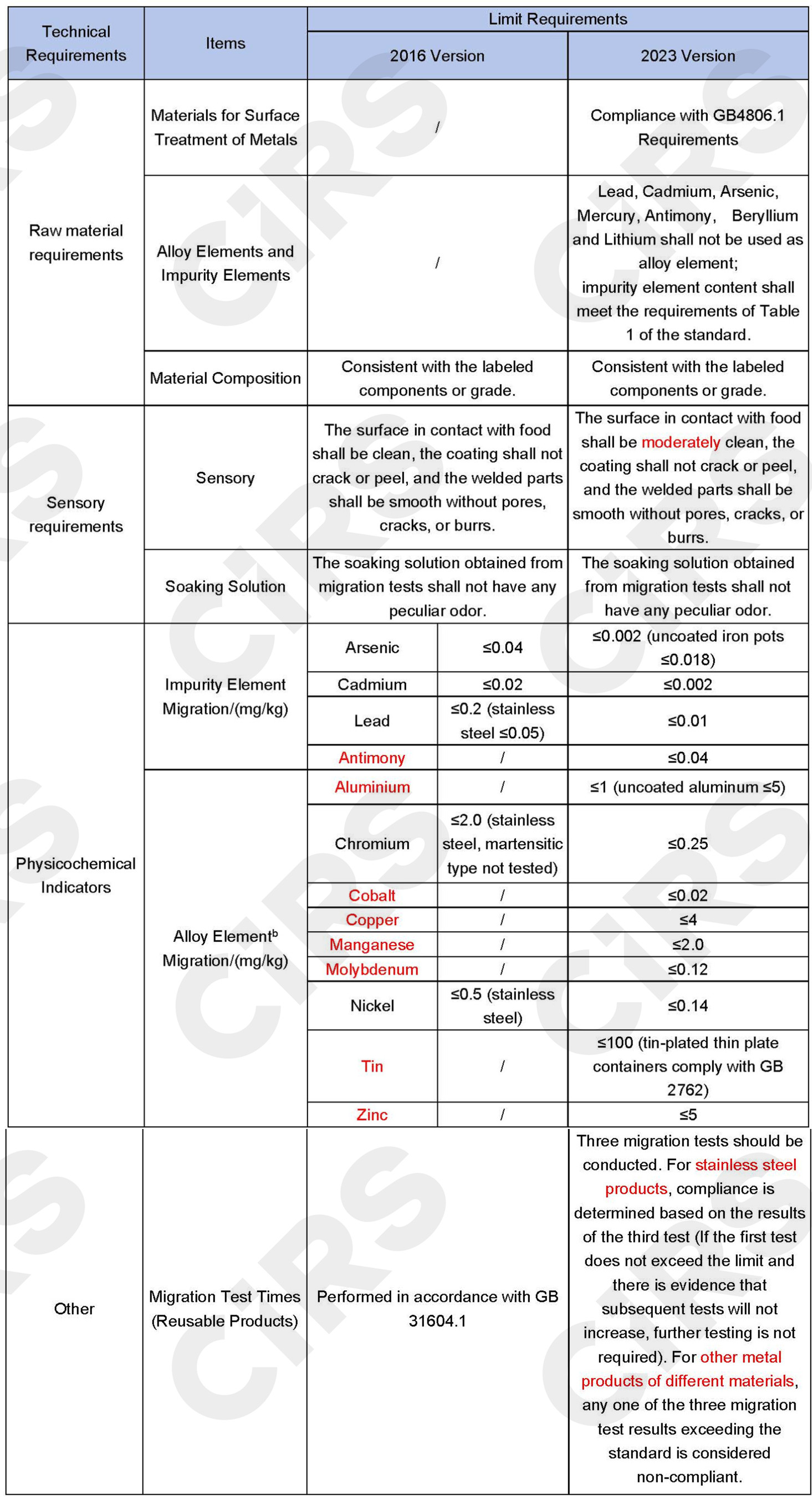On September 25, 2023, the National Health Commission released 85 national food safety standards and 3 amendment notices (NHC Announcement No. 6 of 2023), including 17 standards related to food contact materials, comprising 5 product standards (plastics, metals, rubber, composite materials, inks) and 12 method standards (migration general principles, method validation general principles, specific migration quantity test methods, etc.)."
This article will introduce GB 4806.9-2023 Metal Materials and Products for Food Contact (hereinafter referred to as the Metal Standard'), which will officially take effect on September 6, 2024.
Comparing the 2016 edition, the main changes are summarized as follows:
Table 1: Key Revisions of GB 4806.9-2023 New Standard

Key Points of Concern
As mentioned above, there are significant changes in the technical requirements between the old and new metal standards, Mainly involving raw material, sensory, physicochemical indicator and other technical requirements. A comparison of technical requirements between the old and new standards is shown in Table 2.
Table 2: Comparison of Technical Requirements between GB 4806.9 New and Old Standardsa

a The items listed in the table do not cover specific migration limits and other physicochemical indicators.
b The alloy elements can be determined based on the material composition.
CIRS C&K Testing Reminder
A: Enhance Quality Control of Raw Materials
During the material selection phase, pay attention to selecting suitable metal materials and avoid using lead, cadmium, arsenic, mercury, antimony, beryllium, and lithium as alloy elements. Secondly, ensure that impurity elements such as lead, cadmium, arsenic, and mercury in raw materials meet the latest requirements.
B: Control Key Points in the Production Process
In the process of metal material and product production, surface treatments (such as pickling, oxidation, phosphating, polishing, rust-proof coating, etc.) are common process steps. To mitigate safety risks associated with the introduction of harmful substances through chemicals used in the treatment process, it is recommended to strengthen the safety control of the treatment process and avoid migration risks of residual substances.
C: Conduct Self-Inspection of Finished Products
According to the requirements of the revised standard, conduct proactive self-inspection of finished products and verify compliance through testing and other means.
CIRS C&K Testing has acquired the full set of technical testing capabilities for the new version of the standard mentioned above, including the newly added elemental indicators. If you need any assistance or have any questions, please get in touch with us via test@cirs-group.com.
